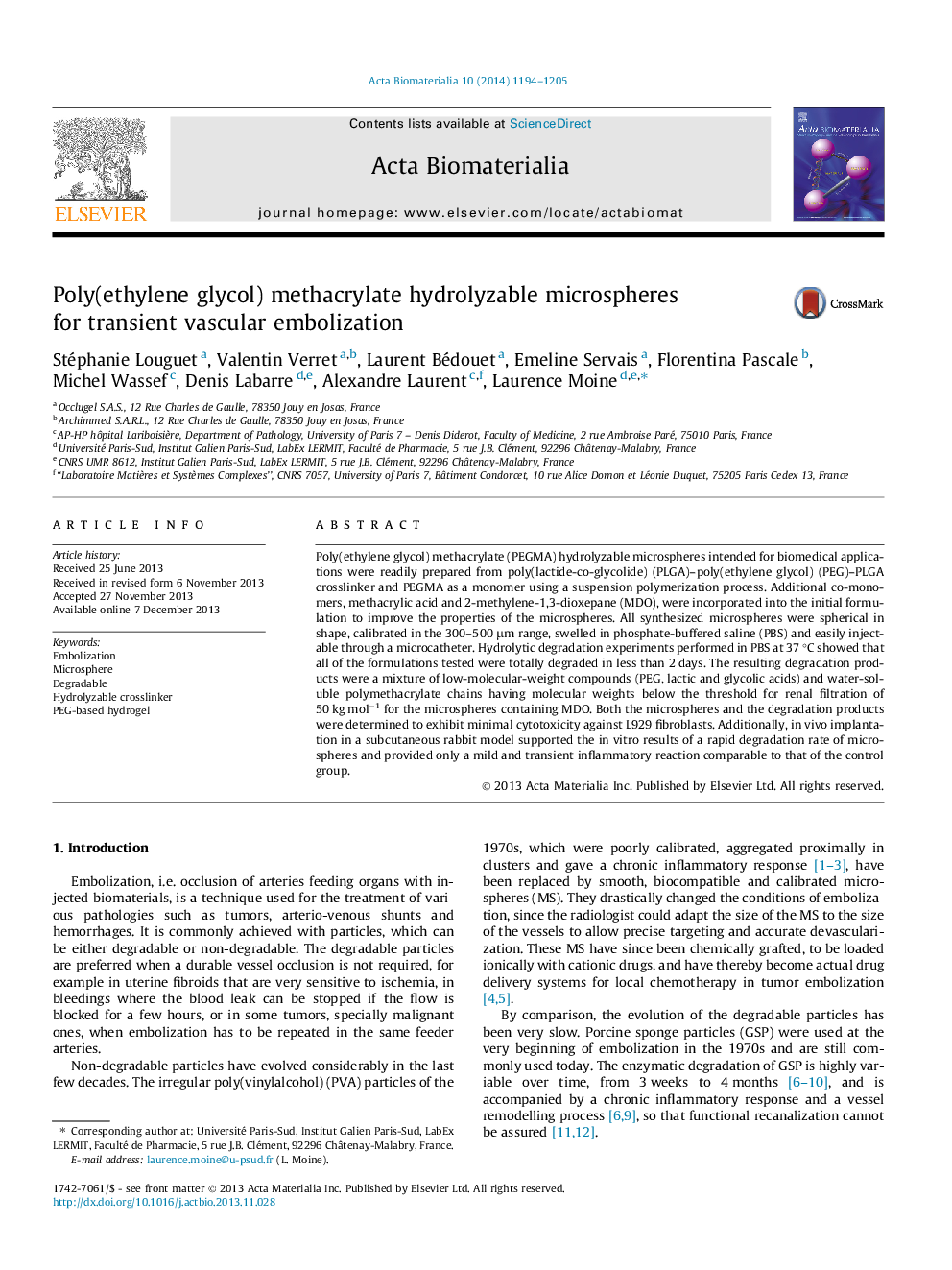| Article ID | Journal | Published Year | Pages | File Type |
|---|---|---|---|---|
| 10159266 | Acta Biomaterialia | 2014 | 12 Pages |
Abstract
Poly(ethylene glycol) methacrylate (PEGMA) hydrolyzable microspheres intended for biomedical applications were readily prepared from poly(lactide-co-glycolide) (PLGA)-poly(ethylene glycol) (PEG)-PLGA crosslinker and PEGMA as a monomer using a suspension polymerization process. Additional co-monomers, methacrylic acid and 2-methylene-1,3-dioxepane (MDO), were incorporated into the initial formulation to improve the properties of the microspheres. All synthesized microspheres were spherical in shape, calibrated in the 300-500 μm range, swelled in phosphate-buffered saline (PBS) and easily injectable through a microcatheter. Hydrolytic degradation experiments performed in PBS at 37 °C showed that all of the formulations tested were totally degraded in less than 2 days. The resulting degradation products were a mixture of low-molecular-weight compounds (PEG, lactic and glycolic acids) and water-soluble polymethacrylate chains having molecular weights below the threshold for renal filtration of 50 kg molâ1 for the microspheres containing MDO. Both the microspheres and the degradation products were determined to exhibit minimal cytotoxicity against L929 fibroblasts. Additionally, in vivo implantation in a subcutaneous rabbit model supported the in vitro results of a rapid degradation rate of microspheres and provided only a mild and transient inflammatory reaction comparable to that of the control group.
Keywords
Related Topics
Physical Sciences and Engineering
Chemical Engineering
Bioengineering
Authors
Stéphanie Louguet, Valentin Verret, Laurent Bédouet, Emeline Servais, Florentina Pascale, Michel Wassef, Denis Labarre, Alexandre Laurent, Laurence Moine,
